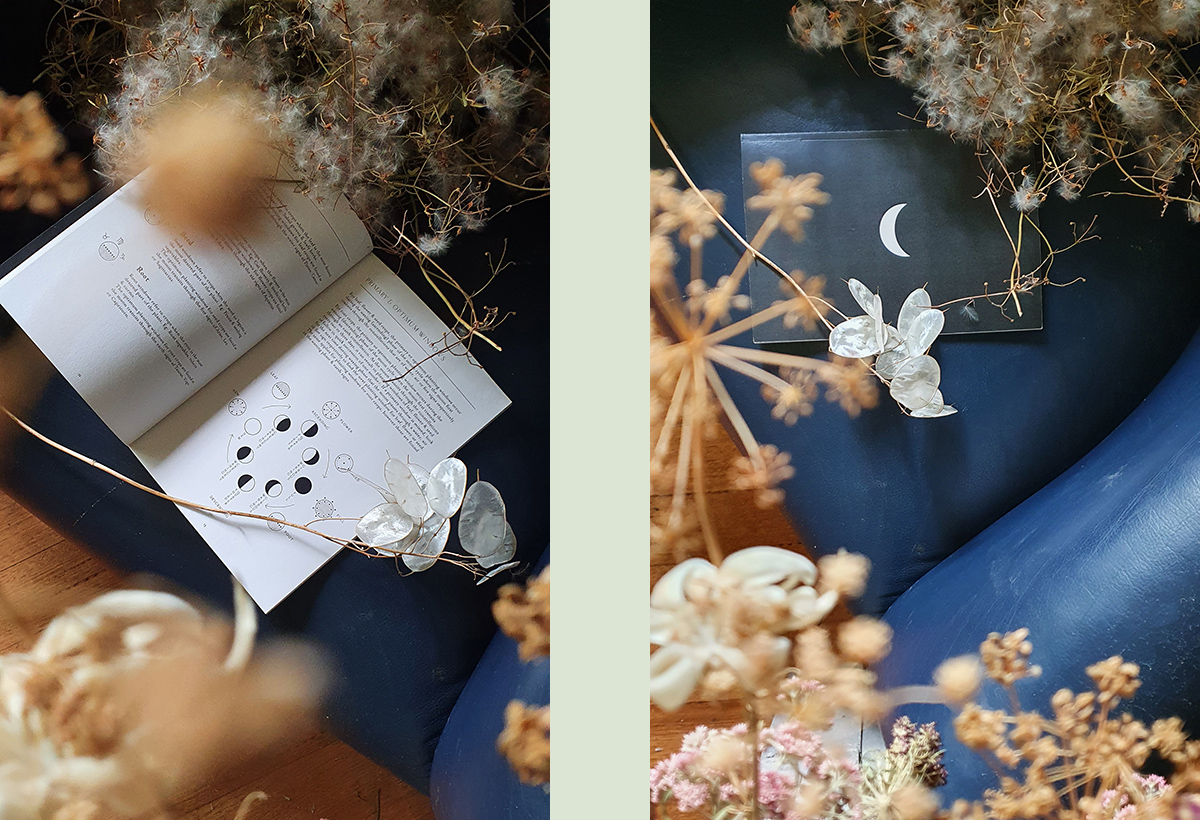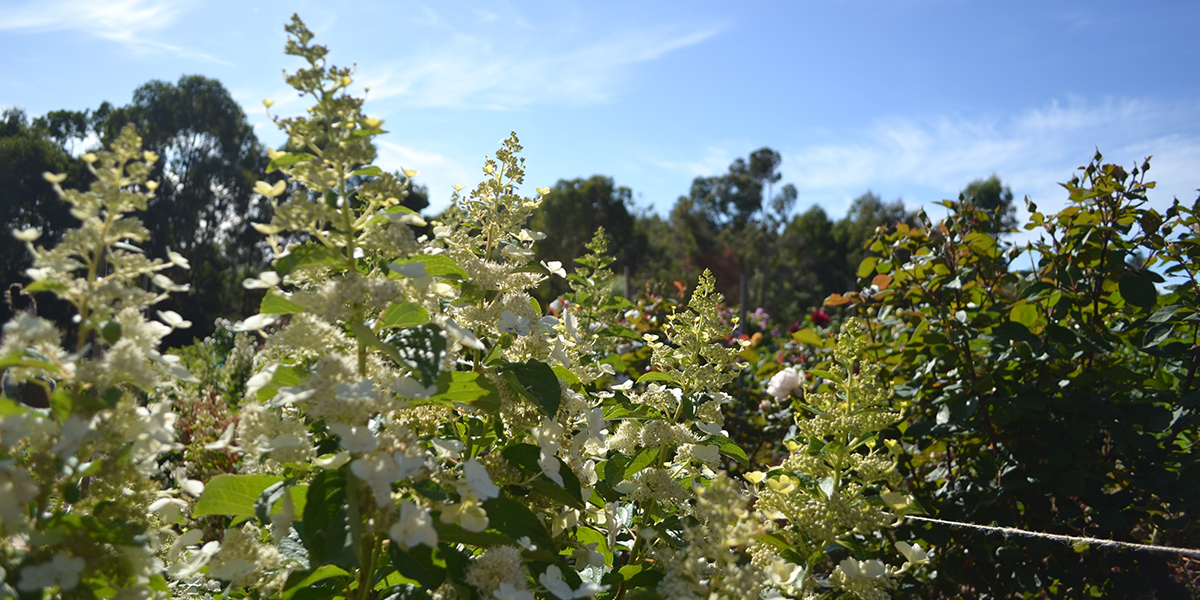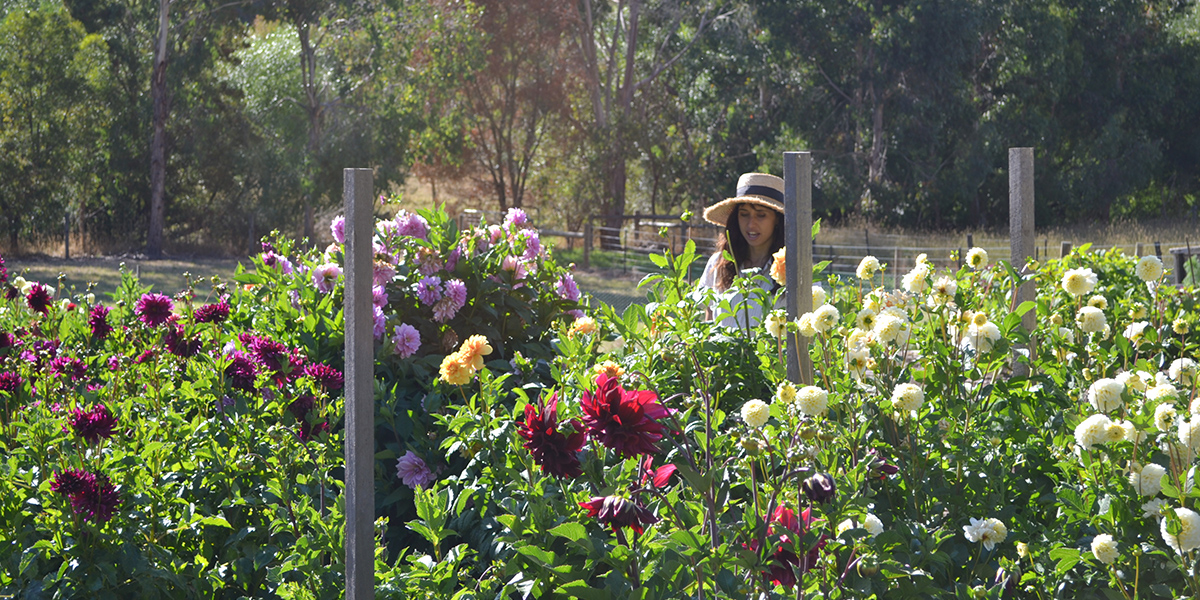
" When farming holistically, the focus is not the end point (eg harvest), but on the creation of a system that supports healthy life from below the soil to the environment and community around it. "
In flower farming, timing is everything. To ensure a successful crop, seeds must be germinated at the right time, seedlings raised at the right time, young plants planted out at the right time, and flowers picked at just the right stage of bloom.
But there is another timing schedule that can be used in farming - the timing of the phases of the moon through the constellations. Meet local flower farmer Phoebe, from Alchemilla.
Reading time | 10 minutes
On a hot Summer morning in January, we headed out to Birregurra, a small town behind the Otway National Park in Western Victoria. Here we met with an amazing young farmer to learn about her unique farming practice, and see her flourishing flower farm; Alchemilla.
Phoebe is in her second year on the farm, and grows Dahlias, Delphinium, Foxgloves, Ammi, Hydrangea, Veronica, Amaranthus, Roses, Chamomile, Cosmos, Anemones, Ranunculus and many more.
She has also just added a new bee hive to the farm and plans to expand to grow some foliage and Spring blossoming varieties.

Before starting Alchemilla, Phoebe studied Horticulture and Landscape Gardening, but eventually found a passion in growing flowers. We asked her about her journey of learning to farm the way she does now, and got some insights about what it's really like working on a flower farm.
Tell us about your story - how did you first get into flower farming, and how did you end up on your current farm?
Before flower farming I was very involved in organic food gardens and cultivation using permaculture and biodynamic techniques. The long story is, I studied landscape design & horticulture, and then followed on from that with permaculture.
After some time in this world, I found I wanted to expand my skillset again, so I went and studied floristry. Going into that with the organic/holistic lens I'd been employing for many years by that time, I was really shocked by the toxicity, pollution, air miles, waste and general misconceptions (as an outsider) of the commercial floristry industry.
I loved working with flowers and the floristry aspect of it, but felt really compelled to delve into holistic cultivation of flowers; using the organic approach & skills that came from my years in permaculture and biodynamics.
As someone that's never worked on a farm before, can you describe what your average day involves?
It really changes according to the day, weather and the season. As we're in Summer I'll go through the typical day for this time of year.
Depending on the forecast, the day will start early with watering done before the heat of the sun kicks in. I'll harvest at the same time so flowers don't wilt, and also so they have time to condition in the cool of the shed before next day deliveries.
This time of the year, disbudding and weeding take up a lot of time as does deadheading. Maintenance and management take up majority of the time all year round - harvest is generally the most straightforward part of the task.
Seasonal planning is a really big component of the yearly calendar, and I generally focus on this during the slow months of Winter when there isn't much happening on the farm, to set myself up for the year ahead.
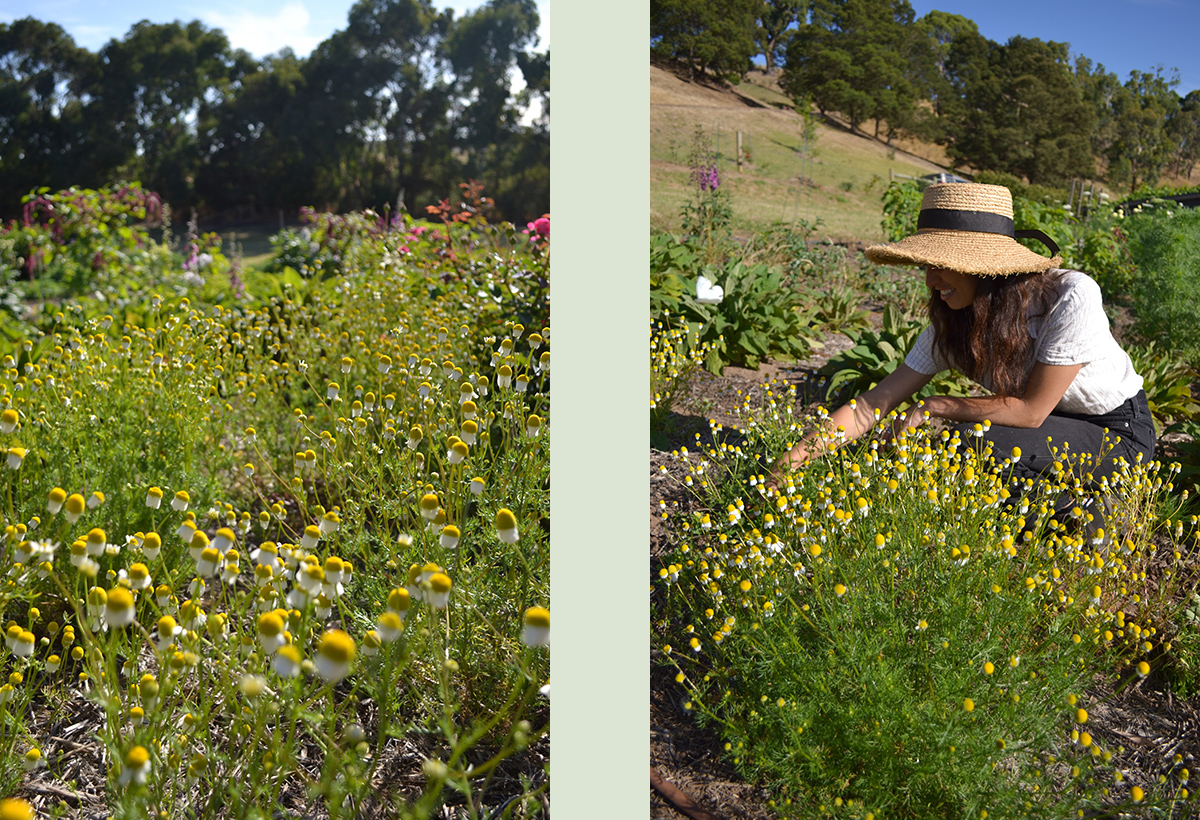
Your farming method is so unique! Can you tell us more about it?
I Can! It's basically a blend of permaculture and biodynamic techniques. I use permaculture design systems and strategies to get the land (a micro farm) producing as much as it can, while thriving in its existing environment with as few external inputs as possible.
I'm essentially looking to close the loop as much as I can, by using and recycling all the organic matter and nutrients produced by the farm back into the system.
The biodynamic calendar and cosmic transits of the moon and major planets then help me keep rhythm throughout the year. As the moon transits through the twelve major constellations each month, it indicates the primary, secondary, and macro windows for planting of the major crop types (leaf, seed, flower or root).
It also forms the structure for a regular feeding program of biodynamic preparations throughout each month and season of the year. This information is explained in further detail in the Alchemilla 2021 Almanac that I wrote/produced last year, and will continue to publish each year.
What are your thoughts on how our cut flower industry is going in Australia? Have you noticed any increase in demand with the growing trend toward locally grown?
I think there's definitely a big awareness within the industry towards the importance and benefits of locally grown flowers, but there's still a really long way to go.
The supply chain for the industry remains dominated by imports and large scale mono crops, and even though there is a momentum shift toward supporting local growers, many of these local farms aren't large enough in scale, or don't have the infrastructure networks to compete yet.
For me personally, the demand for the shift is absolutely coming from within the industry, which is so heartening to see and be part of. Public education and consequent action from this is definitely increasing, but I do still feel the awareness of why local, seasonal, and chemical free is so important is a secondary thought for the average flower consumer.
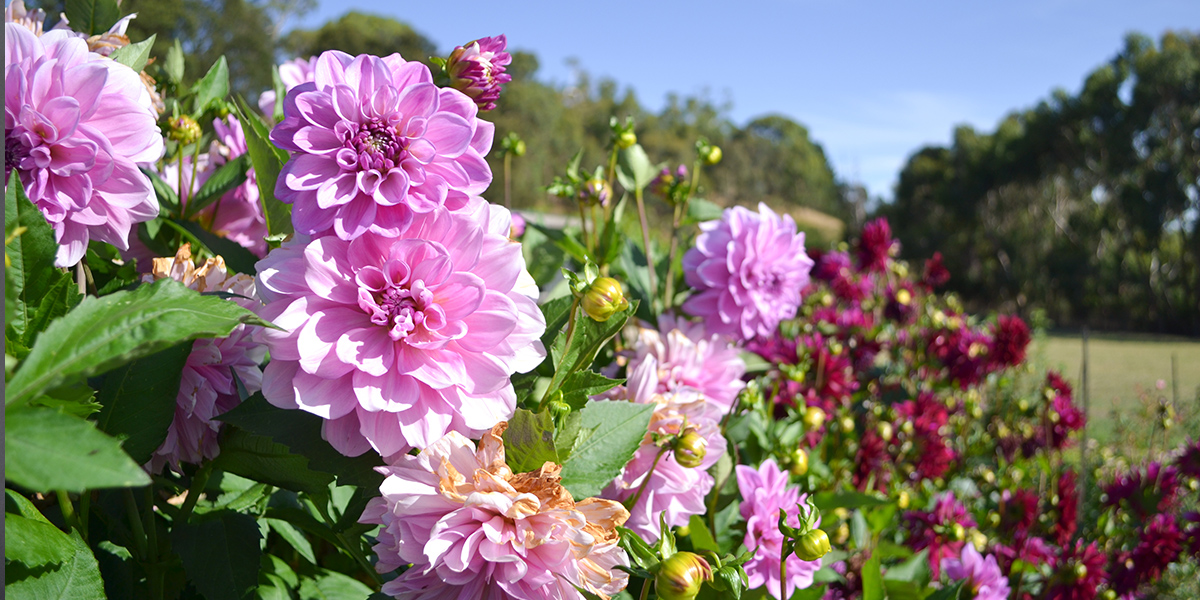
What are your future plans for the farm and your business?
I'm really looking forward to delving deeper into education regarding biodynamics, permaculture, and general holistic cultivation of cut flowers.
There's plenty I'm working on to extrapolate on this year's Almanac, and can't wait to continue to share this information down the track a little. On the flower side of things I'm focusing on wholesale to florists who are passionate about showcasing local, chemical free, healthy flowers in their work, and to help raise awareness about this through sustainability in floristry.
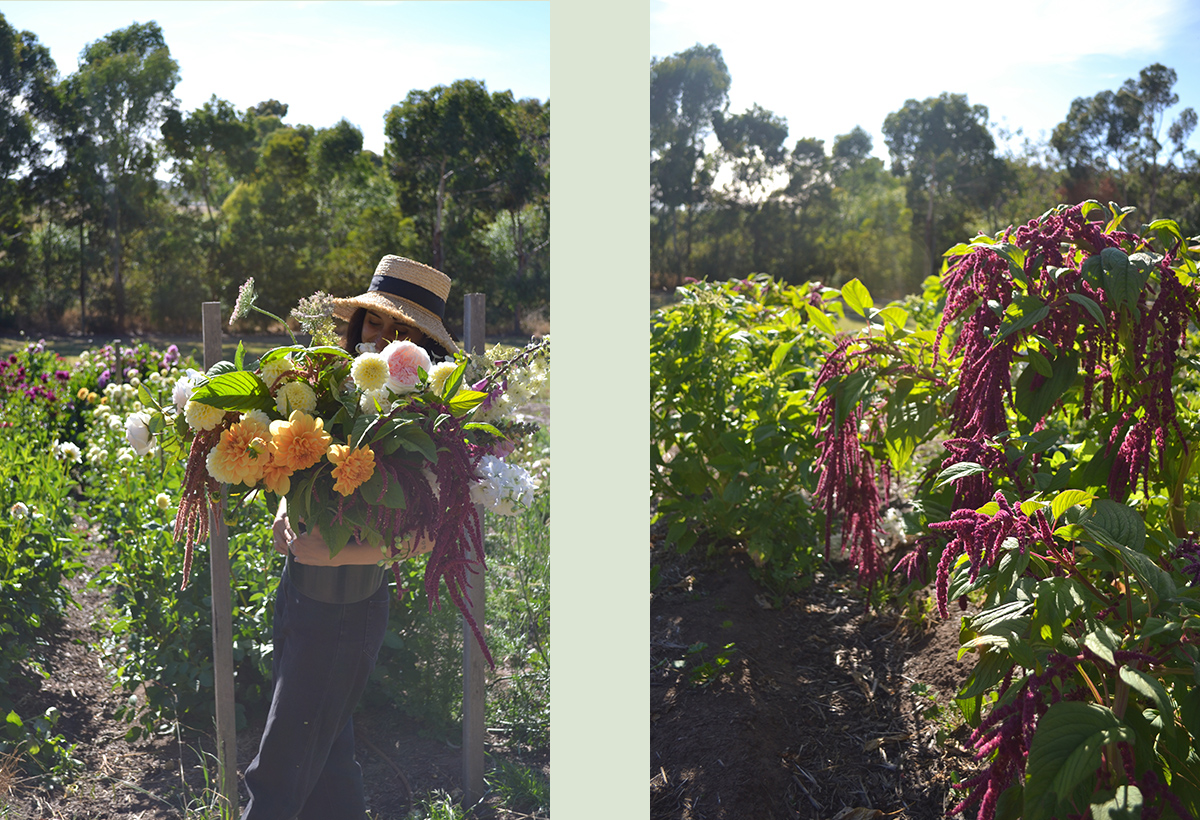
We hope you enjoyed reading Phoebe's story as much as we did! Her farm is absolutely beautiful, and you can see how healthy and vigorous the plants and flowers are.
If you are a florist wanting to get in touch with Phoebe to use some of her beautiful flowers in your work, you can contact her through her website or Instagram page:
Her method of farming is so special and unique, and adds a more meaningful element to gardening, and a greater connection to the lunar cycle. You can use this method at home when planting your own flowers or veggies too! It's a great guide for knowing what to plant when; something lots of beginner gardeners struggle with.
Her 2021 Almanac explains in detail how this works, and sets out an easy to follow planting guide for each month, for the rest of this year. If you would like to own your very own copy and try planting your garden this way, you can purchase them on her website here. They are a beautiful addition to your gardening bookshelf!
